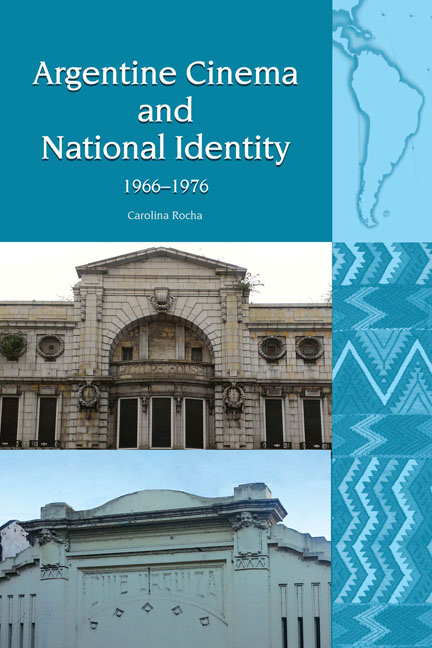Book contents
- Frontmatter
- In Memory of Paulina Piselli (1937–2017)
- Contents
- Acknowledgements
- Introduction
- Section I Argentine History and National Cinema, 1955–1976
- Section II The Cinematic Gauchesque
- 5 Martín Fierro
- 6 Don Segundo Sombra
- 7 Santos Vega
- 8 Juan Moreira
- 9 Los gauchos judíos
- Section III Representing Founding Fathers
- Conclusion
- Bibliography
- Index
9 - Los gauchos judíos
from Section II - The Cinematic Gauchesque
- Frontmatter
- In Memory of Paulina Piselli (1937–2017)
- Contents
- Acknowledgements
- Introduction
- Section I Argentine History and National Cinema, 1955–1976
- Section II The Cinematic Gauchesque
- 5 Martín Fierro
- 6 Don Segundo Sombra
- 7 Santos Vega
- 8 Juan Moreira
- 9 Los gauchos judíos
- Section III Representing Founding Fathers
- Conclusion
- Bibliography
- Index
Summary
In early 1974, preproduction for Los gauchos judíos began. It was to be the third film directed by Juan José Jusid (1941–), a young and up-and-coming filmmaker who had directed two other films, Tute cabrero (1968) and La fidelidad [Fidelity] (1970), that revolve around turning points in the lives of middle-class characters. Jusid was himself the son of a ‘progressive’ Jewish family (Nuñez, 1994, 8). Los gauchos judíos was an adaptation of the homonymous short story collection by Alberto Gerchunoff (1883–1950), with a script by his daughter, Ana María Gerchunoff, Jorge Goldenberg, Alejandro Saderman, Oscar Viale, and Jusid himself. Jusid also produced the film along with Leopoldo Torre Nilsson and the brothers Mario and Norberto Kaminsky. The cast was composed of first-class performers: José Soriano, Dorat Baret, Victor Laplace, China Zorrilla, Osvaldo Terranova, Luisina Brando, Jorge Barreiro, and Arturo Maly. Jusid described the film as a choral one, that is, lacking protagonists. In addition, the film had remarkable costumes designed by Margarita Jusid and a musical score interpreted by Gina María Hidalgo (1927–) based on songs written by Gustavo Beitelman.
The production was not without several challenges. With 100 actors, two advisers—one for Jewish and liturgical matters and another for creole and gauchesque details—the film's shooting began in April 1974 in an area owned by the Argentine army in Campo de Mayo. At first, it was estimated that the film would be finished by January 10, 1975, but the production faced certain problems. First, Rajil, the town in which Gerchunoff's short stories are set, no longer existed. Jusid and his team had to wander around Villaguay [in the province of Entre Ríos] for three months to reconstruct it (‘Los gauchos judíos: paisanos,’ 1975, 52). Second, because the film was shot in Campo de Mayo, a set recreating a rural town had to be built, but a fire in November 1974 destroyed it. An investigation of the site showed undisputable traces of foul play, which resulted in questions of whether this criminal act was motivated by anti-Semitism. Because the sets were uninsured, the producers had to pay to rebuild them. This unexpected obstacle delayed shooting for at least two weeks.
- Type
- Chapter
- Information
- Argentine Cinema and National Identity (1966–1976) , pp. 122 - 130Publisher: Liverpool University PressPrint publication year: 2018

